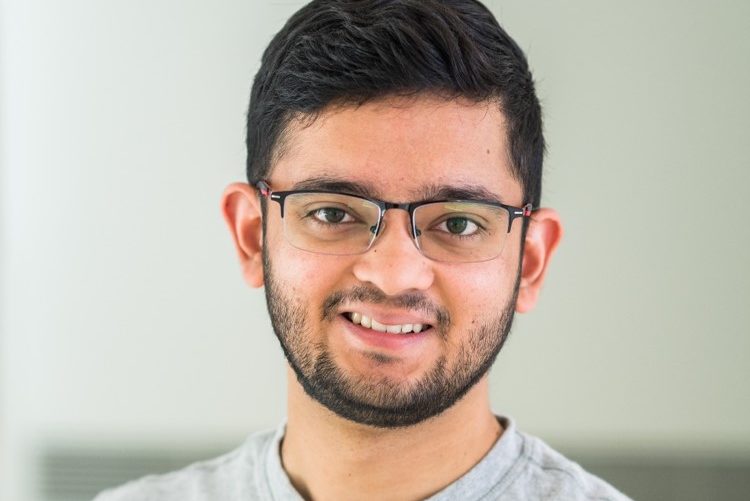First-year Tata Fellow Sidhant (Sid) spent time in India as a child and felt the effects of poor air quality. Now as a Ph.D. candidate he is invested in contributing to a solution.
Sidhant Pai is a Tata Fellow and Ph.D. student in Environmental Engineering at MIT. He received his bachelor’s degree from MIT in 2014. When he’s not working on his code, Sidhant enjoys hiking, reading, playing pick-up basketball and grabbing a casual beer at his favorite bar.
Currently, he is studying Atmospheric Physics and Chemistry with the Heald group at MIT, where he works with computational models and statistical techniques (in conjunction with satellite and aircraft measurements) to characterize and quantify air pollution sources over the Indian subcontinent.
What brought you to MIT for grad school?
I had a great four years at MIT as an undergrad and thoroughly enjoyed my time here. After I graduated, I spent a few years outside the academic bubble, working on a social enterprise in India. When I decided I wanted to go to grad school to study air pollution, I was excited to come back to MIT and work with Colette Heald, an expert in the field of atmospheric chemistry modeling. The opportunity to focus my Ph.D. on an important real-world issue, while being in an intellectually stimulating environment where I could learn new skills, was very appealing and I’m excited to be back!
How did you become interested in challenges around pollution and air quality?
The Indian subcontinent is subjected to some of the highest levels of ambient air pollution in the world. In addition to its detrimental impacts on human health, studying air pollution is important due to its negative influence on regional climate, crop yields, etc. I spent a large part of my childhood in India and suffered from asthma when I was younger. The air quality in the region is thus of personal significance to me, and I feel especially invested in understanding the problem and contributing to a solution. I studied environmental science as an undergrad and spent most of my senior year working on low-cost sensors to monitor ambient air quality. Over the course of that experience, I found myself drawn to the underlying science and was interested in pursuing it further. I am also passionate about social and environmental justice and found that my work on air quality intersected with both these fields.
What are your aspirations for this project?
There are two components to this project. The first is a technical assessment of the various sources of particulate pollution over India. This will be achieved using a state-of-the-science computational model and various statistical techniques constrained with satellite, aircraft, and field observations. The second component of the project is the dissemination of these results to various stakeholders. The broad goal of my work is to collaborate with policymakers and other community partners in India to develop effective solutions to improve air quality in the region.
What are the key things you’ve learned in your first several months as a Tata Fellow?
I enjoy the emphasis the fellowship lays on ensuring that the research we do engages the appropriate stakeholders and has real-world benefits. The idea behind ‘translational research’ is interesting and I have learned a lot about various frameworks to evaluate technological interventions within a developing world context. I am broadly interested in exploring quantitative metrics for impact assessment and the fellowship has provided me with the exposure to a number of interesting case studies in order to understand and validate different evaluation methodologies.
What is one book that has impacted the way you think about the world?
Hmm, it’s hard to pick a particular book but, in the context of this fellowship, I think Poor Economics by Banerjee and Duflo provides interesting insights into the various factors that influence human behavior at the base of the pyramid. I read it in college and it still impacts the way I think about external injections of technological solutions and economic support to alleviate poverty in underserved communities.



